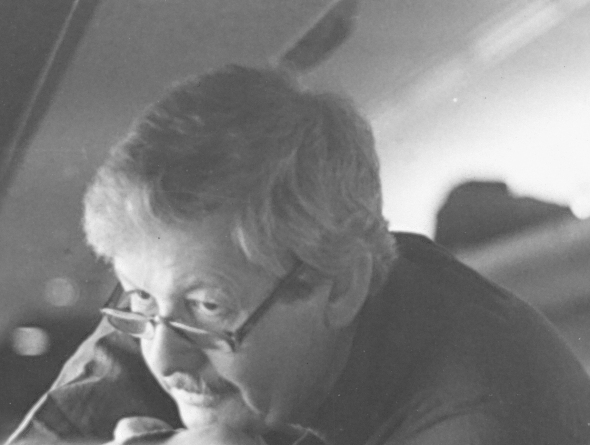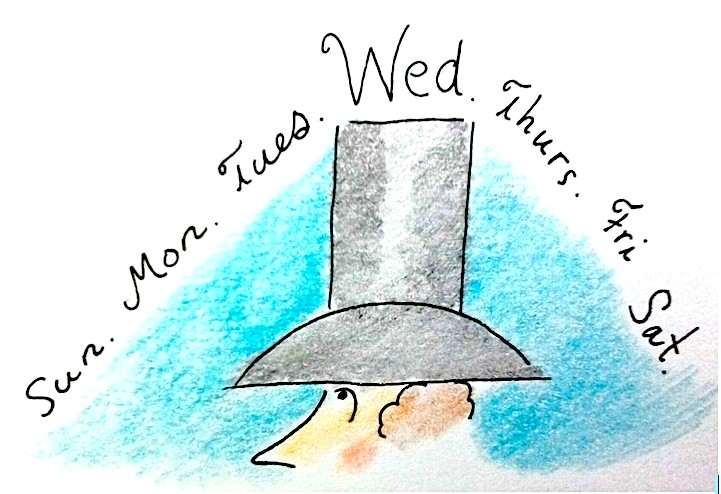A Great Cartoon

I’ve a shortlist of remembered cartoons in my brain that never ever fail to amuse and inspire. Cartoons such as these are often referred to as “evergreens.” They’re not tied into current events, or a fad, or a word or phrase of the moment. I’m not going to list my favorite evergreens here, but will put a Spill spotlight on them from time-to-time. Of course, my idea of a great cartoon may not be your idea. I welcome others to send me what you feel is a great cartoon.
Here’s a favorite from the late very great Robert Weber. It was published in The New Yorker February 9, 1981.
When the drawing came to mind yesterday (the caption suddenly ran through my memory bank), I needed to immediately revisit the drawing itself — to see it. Cartoons — great cartoons — are a package deal; they beautifully intertwine drawing and caption. One reason I dislike the term “gag cartoon” or even just “toon” is that I feel they do a disservice to work such as Weber’s. His work is more than a sketch delivering up a punchline. That beautiful intertwining is of course the ultimate goal for cartoonists (unless you’re working with a captionless drawing). Weber has given us a perfect “fleeting moment” [William Steig, said of New Yorker covers: “For me, a cover is a moment of Haiku — a special moment fleetingly observed.” I think “fleeting moment’ can also apply to cartoons].
The drawing captures a busy moment in Manhattan; Weber’s energetic lines channel the city’s energy. He shows us a cab and a bus on the move in traffic, a row of buildings (distinct buildings, with a variety of architecture), and an assortment of pedestrians, most striding along. The academic and the policeman are paused — they’re in freeze frame mode. With all the drawing going on in this cartoon, it’s really interesting that the policeman’s expression is handled by a slightly blurred dot of an eye, and a short line — less than the length of a dash — for a mouth. The blurred eye suggests, perhaps, concern, or tedium. He probably gets a hundred questions a day on his beat. The academic seems awfully pleased with himself, all bundled up, pipe firmly in place — there’s a slight smile on his face. Perhaps that assuredness (or smugness?) is one of the major keys to the drawing’s success.
If you know Robert Weber’s work, you know that the care, artistry, and humor he put into this drawing was not unusual. His body of New Yorker work is a master class in high bar cartoon art. There has never been a collection of Weber drawings. He was, according to what I was told by Lee Lorenz (the magazine’s former art/cartoon editor) “not interested” in a collection.
___________________________________________________________________________
Robert Weber’s A-Z Entry:

Robert Weber (Photograph, taken in the mid 1980s, by Liza Donnelly) Born April 22, 1924, Los Angeles, California. Died, October 20, 2016, Branford Connecticut. New Yorker work: nearly 1500 cartoons, and close to a dozen covers since 1962. Read Ink Spill’s November 2016 Apreciation of Mr. Weber here.



More of this kind of post, if you please.
I agree with Paul. I love how you called out all the detail.
what Paul said, if you please
Really nice, Michael. So fully observed.
Also love how solidly the policeman and the academic are planted on the sidewalk and the sprightly, almost balletic steps of the other passersby- their legs are like pins in comparison to the tree trunks of the main characters. Makes the scene feel like a city in motion with a stop frame at its (slightly right-of) center.